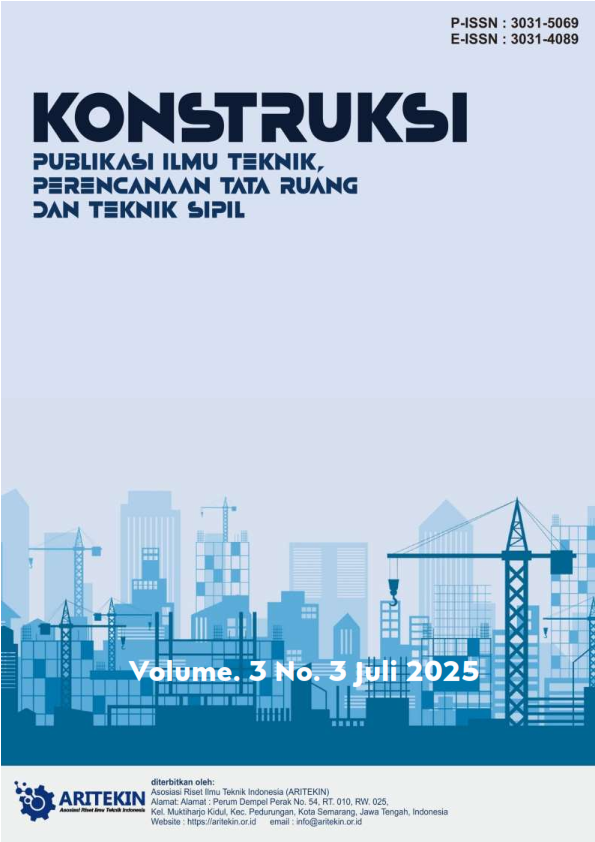Analisis Perhitungan Timbulan Sampah Rumput di Area Perusahaan Migas
DOI:
https://doi.org/10.61132/konstruksi.v3i3.846Keywords:
grass waste, industrial green areas, weighing methodsAbstract
Oil and gas companies generally have large green areas as part of fulfilling environmental and aesthetic obligations in industrial areas. Routine maintenance such as grass cutting produces organic waste that needs to be managed efficiently to prevent negative environmental impacts. This study aims to calculate the generation of grass waste in oil and gas company areas by comparing two methods: direct weighing and sampling methods. The direct weighing method is carried out by collecting and weighing the results of the cutting in a limited area, while the sampling method involves taking samples from several representative points and extrapolating the results to the entire area. The results showed that the average grass waste generation was 0.286 kg/m². With an area of around 1,000 m², the total generation is estimated to reach 286 kg. Both methods have proven to complement each other: direct weighing provides precise data, while the sampling method allows for efficient estimation for larger areas. This data can be used as a basis for planning more adaptive, effective, and sustainable grass waste management, including the use of waste as organic compost that has economic value and is environmentally friendly.
References
Badan Standardisasi Nasional. (1994). SNI 19-3964-1994: Metode pengambilan dan pengukuran contoh timbulan dan komposisi sampah perkotaan. Jakarta: Badan Standardisasi Nasional.
Hasibuan, M. R. R. (2023). Manfaat Daur Ulang Sampah Organik Dan Anorganik Untuk Kesehatan Lingkungan.
Puger, I. G. N. (2018). Sampah organik, kompos, pemanasan global, dan penanaman aglaonema di pekarangan. Agro Bali: Agricultural Journal, 1(2), 127-136.
Rezza, I. M., & Fauzi, A. S. (2023, July). Rancang bangun alat pencacah sampah organik berkapasitas 25 kg/10 menit. In Prosiding SEMNAS INOTEK (Seminar Nasional Inovasi Teknologi) (Vol. 7, No. 2, pp. 766-771).
Sarief, S. (1986). Kesuburan tanah dan pemupukan tanah pertanian. Bandung: Pustaka Buana.
Sistem Informasi Pengelolaan Sampah Nasional. (2023). [Tanpa judul]. Dalam Pengolahan sampah dan sisa makanan. https://sipsn.menlhk.go.id/
Thesiwati, A. S. (2018). Peranan kompos sebagai bahan organik yang ramah lingkungan. Jurnal Pengabdian Kepada Masyarakat Dewantara, 1(1 September), 27- 33.
UN-Habitat. (2020). Waste Wise Cities Tool: Panduan langkah demi langkah penilaian kinerja pengelolaan sampah kota melalui pemantauan indikator SDG 11.6.1 [Edisi Bahasa Indonesia]. United Nations Human Settlements Programme (UN-Habitat). https://unhabitat.org
Downloads
Published
How to Cite
Issue
Section
License
Copyright (c) 2025 Konstruksi: Publikasi Ilmu Teknik, Perencanaan Tata Ruang dan Teknik Sipil

This work is licensed under a Creative Commons Attribution-ShareAlike 4.0 International License.






